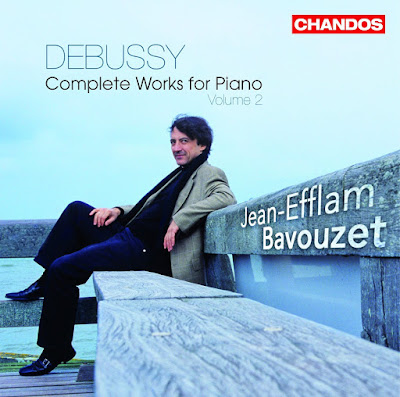 “Another Timbre celebrate the sixtieth anniversary of the publication of John Cage's
influential work "Silence" by releasing "Four 4", a work written in 1991, the year
before Cage died. It was written for four percussionists, but the composer in his
typical way, chose to let the musicians decide which instruments to use! By selecting
the general instrumentation, while still allowing players to choose the specifics
freely, Cage showed that he does not really lack interest in how the music should
sound, he gives up only on the detail of the choices. So his ego drew back, but
- paradoxically - that doesn’t mean that he allowed that it should sound like just
anything. Cage was not a pronounced friend of improvisation, or rather, he saw it
only as one of many methods.
“Another Timbre celebrate the sixtieth anniversary of the publication of John Cage's
influential work "Silence" by releasing "Four 4", a work written in 1991, the year
before Cage died. It was written for four percussionists, but the composer in his
typical way, chose to let the musicians decide which instruments to use! By selecting
the general instrumentation, while still allowing players to choose the specifics
freely, Cage showed that he does not really lack interest in how the music should
sound, he gives up only on the detail of the choices. So his ego drew back, but
- paradoxically - that doesn’t mean that he allowed that it should sound like just
anything. Cage was not a pronounced friend of improvisation, or rather, he saw it
only as one of many methods.
These days the elements of silence, style and repetition are often used within improvisation.
Without thinking about it, improvised musicians work with sounds and materials that
are often reminiscent of Cage’s music. In this piece he withdrew having created a
meagre economy of musical means for the players to explore. He used so-called "time
brackets" in the score, determining only how long the piece should be. In "Four 4" he lets the first player start his "time bracket" choice somewhere between 0'00
and 1'00, but it must end somewhere between 0'40 and 1'40. When such different "time
brackets" are used for multiple players, the result will vary substantially in each
realisation, and that leaves the performers with an enormous amount of artistic nuance
and sensitivity with regard to each other's playing. This method creates a narrow
limitation on one plane, but leaves things wide open on another dimension.
This performance opens with 30 seconds and ends with another 90 seconds of silence,
or rather of inactivity by the musicians. This extreme openness of structure inevitably
creates a relationship with so-called free improvised music. The soundworld that
is heard is significantly interwoven with the kind of low-dynamic gestures that we
are used to in improvised music. As soon as the performance begins we sense both
a slowness of pace and an energetic rhythmic repetition that moves between the instruments
(and especially the very special timbres produced by Chris Burn’s piano).
The piece sounds as transparent as improvised music often tends to be. It's also
good to hear how a piece with written instructions can sound playful at times so
that the pauses seem to vibrate with sounds. Paradoxically, this recording of Cage
which is a tribute 60 years after "Silence" provides the clearest evidence of how
alive Cage is within today's music. The musicians, seasoned within improvisation,
have brought with them a sense of nuance and group interaction so that Cage’s work
is taken into a completely different rhythmic and tonal space than usual. So let
Cage think what he wants about improvisation, but these improvisers have developed
his sound gently and firmly in their own way.” (Thomas
Millroth / Sound of Music)








































